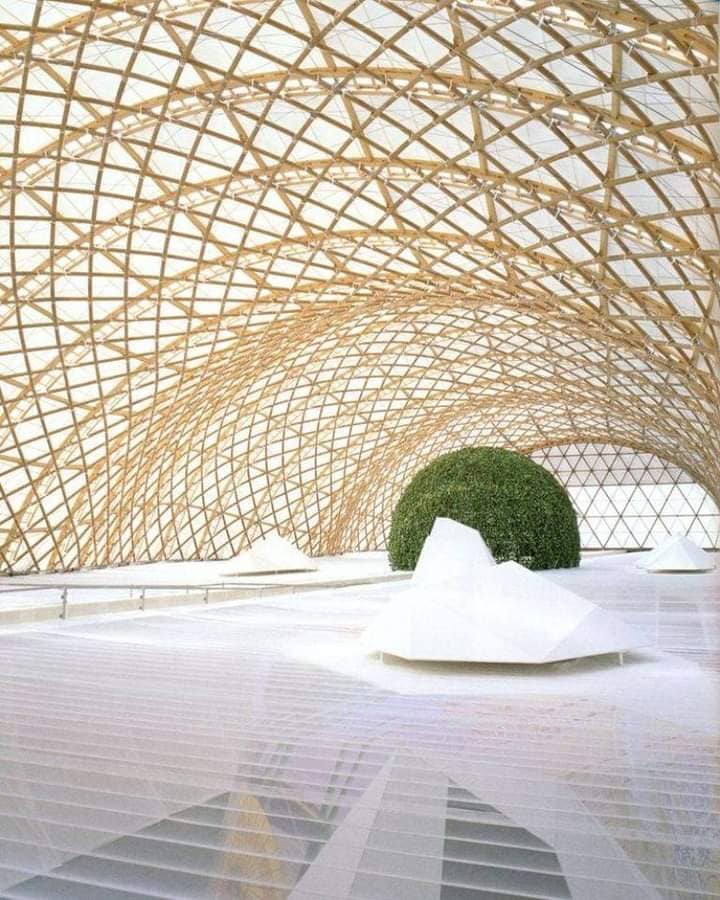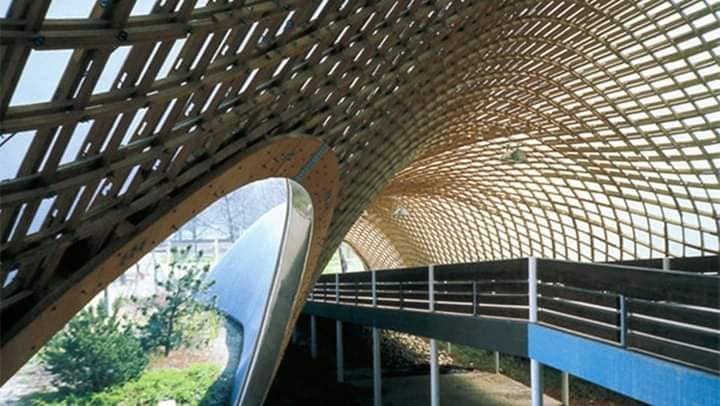Frei Otto An Innovative Vision in Lightweight and Sustainable Architecture
The German architect and civil engineer Frei Otto (1925–2015) was renowned for his pioneering innovations in lightweight and tensile structures. In 2015, he was awarded the Pritzker Prize, one of the most prestigious honors in architecture. Otto was far ahead of his time, striving to find new ways to use minimal materials and energy to create space. He embraced principles of sustainability long before the term became widely established in architectural discourse.
This article explores Frei Otto’s contributions to architecture, the characteristics of his designs, and his lasting impact on the field today. It also highlights both the positive aspects and challenges associated with his approach.

Lightweight and Tensile Structures: A Paradigm Shift in Architecture
Frei Otto’s work stood out for its use of lightweight, tensile structures such as membranes and stretched surfaces. These were unconventional at the time but soon became a source of inspiration for architects and engineers around the world.
Otto utilized light materials like polymers and steel cables to create strong yet resource-efficient structures. This approach significantly reduced the environmental footprint of the projects he worked on, setting a precedent for sustainable construction practices.

Sustainability in Architecture A Timeless Approach
One of Frei Otto’s most notable traits was his early emphasis on sustainability. He aimed to reduce the consumption of raw materials and design structures that could be easily disassembled or reused without harming the environment.
According to a UNESCO report from 2017, one of the core principles of sustainability is reducing the carbon footprint of projects, which aligns closely with the philosophy Otto applied throughout his career.
Sustainability means not only preserving the environment but also achieving efficiency in resource use.
UNESCO Report, 2017

Design Innovation How Otto Redefined Space
Otto was not just a technical engineer—he was a creative force who used geometry to craft dynamic spatial experiences. He relied heavily on experimentation and sought the best balance between aesthetics and functionality.
For instance, he often built small-scale physical models to test how membranes behave under tension. This method was uncommon at the time but has since become part of modern digital design methodologies.
| Method | Description | Benefit |
|---|---|---|
| Physical modeling | Building small prototypes to test structural behavior | Improved design accuracy |
| Digital simulation | Using software to simulate forces acting on structures | Reduced time and costs |
Frei Otto’s Influence on Modern Architecture
Even after his death in 2015, Otto’s influence continues to shape contemporary architecture. His ideas have inspired large-scale projects worldwide and contributed to the development of new techniques in building movable theaters, extended metal roofs, and stadium coverings.
Moreover, his concepts paved the way for what is now known as “temporary architecture”—a field focused on providing flexible, rapid, and cost-effective solutions.

ArchUp Analysis: Personal Insights and Critical Discussion
While Frei Otto made significant contributions to lightweight architecture, there are ongoing challenges in adopting this type of design more broadly. Among these are:
- High maintenance costs : Tensile structures require regular upkeep, and the materials may be less resistant to long-term climatic changes.
- Design limitations : Despite their creativity, these systems can sometimes fall short in meeting complex functional needs.
- Technical dependency : Implementation requires specialized expertise, which can increase project costs in some cases.
Nonetheless, Otto’s vision remains inspiring, opening new possibilities for engineers to explore smart and sustainable solutions—especially in the face of current environmental challenges.

Summary Table of Key Points
| Area | Details |
|---|---|
| Engineer’s Name | Frei Otto |
| Nationality | German |
| Year of Death | 2015 |
| Major Award | Pritzker Prize |
| Primary Specialization | Lightweight and tensile structures |
| Key Innovations | Minimal material use, high-efficiency spatial design |
| Core Principle | Environmental sustainability and reduced carbon footprint |
| Current Impact | Inspires modern projects and advances new architectural technologies |

Frequently Asked Questions (FAQ)
Q1: What made Frei Otto different from other architects?
A: He stood out for his work in tensile and lightweight structures and his early adoption of sustainability principles in architecture.
Q2: Can Frei Otto’s designs be applied to residential projects?
A: Yes, though they are more commonly seen in public and experimental buildings due to the nature of the materials and techniques involved.
Q3: What are some of Frei Otto’s most notable projects?
A: One of his most famous works is the roof structure of the Munich Olympic Stadium, an early example of tensile architecture.
Q4: Why are Otto’s designs considered sustainable?
A: They use fewer materials and reduce energy consumption during manufacturing and installation.
Q5: Are Frei Otto’s ideas still used today?
A: Yes, his concepts continue to inspire many engineers and are applied in a more advanced form in various modern projects.







